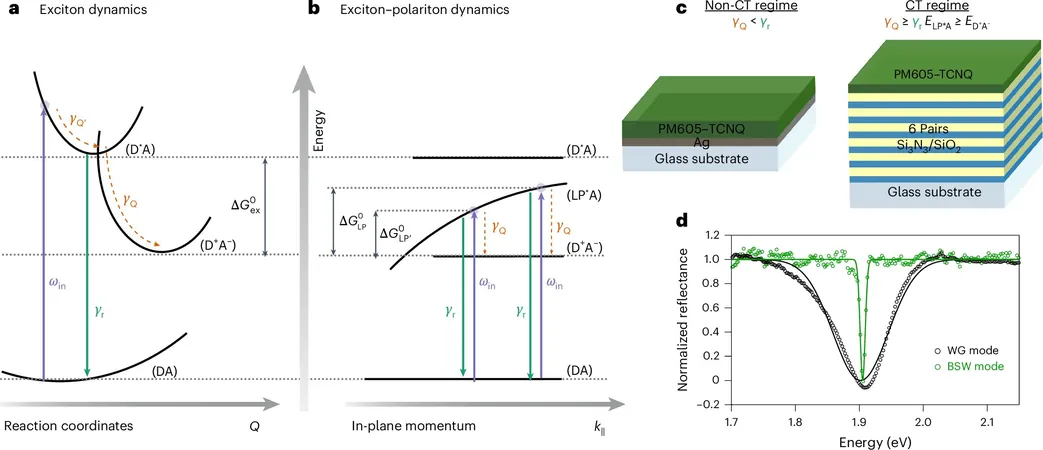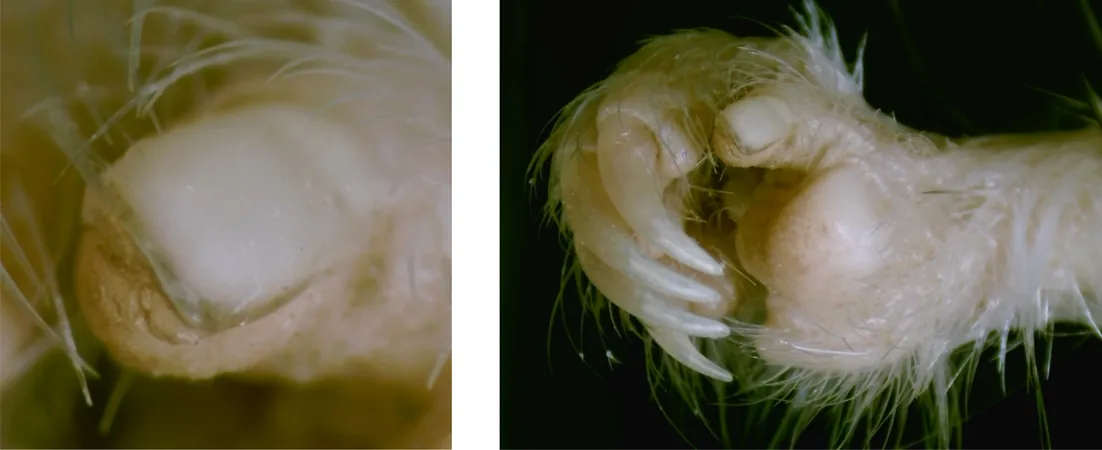
Revolutionizing Energy: How Polaritons Are Set to Supercharge Molecular Charge Transfer
2025-09-03
Author: Noah
Unlocking the Power of Polaritons
Polaritons, the intriguing quasiparticles born from the fusion of photons and matter excitations, are changing the game in molecular chemistry! These dynamic hybrids are proving to be key players in enhancing fundamental chemical processes.
The Charge Transfer Breakthrough
Recent breakthroughs reveal that polaritons can dramatically influence photoinduced charge transfer—an essential process where an absorbed photon excites an electron from a donor molecule and transfers it to an acceptor molecule. This mechanism is critical for cutting-edge technologies, such as energy harvesting systems and clean fuel production.
A Groundbreaking Discovery in Nature Nanotechnology
In a groundbreaking study published in Nature Nanotechnology, scientists from the Advanced Science Research Center at CUNY Graduate Center have for the first time demonstrated a direct, tunable, and highly efficient polariton-driven charge transfer process. This innovation promises to unlock a plethora of new opportunities for chemistry-driven devices like solar cells, photocatalysts, and optoelectronic systems.
From Light to Molecules: The Polariton Revolution
Traditionally, charge transfer reactions operated efficiently only under specific conditions, typically involving light of a single color like green or red. But now, Matthew Y. Sfeir, the study's senior author, emphasizes a significant shift: “By confining molecules and light waves to a small volume, we create polaritons—a blend of light and matter that broadens the spectrum of light utilized for chemical reactions.”
Leveraging Bloch Surface Wave Polaritons
The research particularly focused on a type of polariton known as Bloch surface wave polaritons (BSWPs), which navigate along layered optical structures. Their exceptional longevity and hybrid state abilities make them perfect for facilitating and adjusting molecular charge transfer.
Simplifying Complex Chemistry
Sfeir notes the efficiency of photochemical processes hinges on both the available types of light and the molecules involved. In a bid to simplify the optimization process, researchers sought to see if they could manipulate the properties of the same molecule under varying degrees of light coupling.
Navigating the Polariton Challenge
Through a meticulously engineered polaritonic platform, the team achieved direct control over charge transfer reactions, revealing critical conditions for reliable polariton participation. However, Sfeir cautions that harnessing energy from polaritons is no walk in the park: “They tend to release energy rapidly, a quality that complicates efficiency.” Yet, they managed to lower the energy requirement for charge transfer by about 33%—a significant leap forward!
A Bright Future Ahead
This groundbreaking research sheds light on the potential capabilities of polariton-based platforms to enhance the efficiency and versatility of charge transfer reactions. In the future, these innovations could pave the way for the next generation of photovoltaic, spintronic, and optoelectronic devices that leverage polaritons to optimize molecular interactions.









 Brasil (PT)
Brasil (PT)
 Canada (EN)
Canada (EN)
 Chile (ES)
Chile (ES)
 Česko (CS)
Česko (CS)
 대한민국 (KO)
대한민국 (KO)
 España (ES)
España (ES)
 France (FR)
France (FR)
 Hong Kong (EN)
Hong Kong (EN)
 Italia (IT)
Italia (IT)
 日本 (JA)
日本 (JA)
 Magyarország (HU)
Magyarország (HU)
 Norge (NO)
Norge (NO)
 Polska (PL)
Polska (PL)
 Schweiz (DE)
Schweiz (DE)
 Singapore (EN)
Singapore (EN)
 Sverige (SV)
Sverige (SV)
 Suomi (FI)
Suomi (FI)
 Türkiye (TR)
Türkiye (TR)
 الإمارات العربية المتحدة (AR)
الإمارات العربية المتحدة (AR)